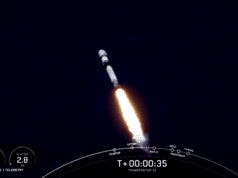South Australia has just moved back about half a billion years thanks to modern technology and Geoscience Australia’s geochronology team.
With the aid of Geoscience Australia’s new Sensitive High Resolution Ion Microprobe, better known as SHRIMP, the scientists have identified rocks from South Australia’s Eyre Peninsula which are around 3,150 million years old.
The Chief Executive Officer of Geoscience Australia, Dr Neil Williams, said that rocks older than three billion years are uncommon and difficult to find, and until now, such ancient rocks in Australia were thought to be restricted to areas in the Pilbara and Yilgarn regions of Western Australia.
“The discovery of rocks of similar age to those in the resource rich regions of Western Australia raises the possibility of so far undiscovered mineral resources in South Australia,” Dr Williams said.
“The newly identified rocks, which were among samples collected as part of a collaborative seismic survey by Geoscience Australia and Primary Industries and Resources SA, extend South Australia’s antiquity back another 500 million years,” he said, adding that the discovery provided another site on the list of ancient rocks, which had significant implications for establishing how the Australian continent was formed.
The rocks are remnants from the Mesoarchean era, a time on Earth when the atmosphere was unbreathable, the only life was simple bacteria and most of the Australian continent was yet to form. The rock analysed with SHRIMP is a granite from near Iron Knob about 50 kilometres west of Whyalla and forms the foundations of the Middleback Ranges where iron ore mining started in the 1890’s. Work by Geoscience Australia in collaboration with Primary Industries and Resources SA is continuing in an effort to define the regional extent of rocks of this age and obtain further clues about the geological history of the region.
Dr Williams said the discovery was made by Geoscience Australia as part of its program under the Australian Government’s Energy Security Initiative to predict where new energy and mineral resources may be located deep in the Earth’s crust.
“Within this program a series of deep seismic survey are being made in regions which are considered to have potential for significant energy related resources, such as uranium and geothermal sources and mineral deposits such as iron ore, gold, copper, lead and zinc. Investigation of surface rocks to help understand what is being revealed at depth by these seismic surveys resulted in analyses on Geoscience Australia’s SHRIMP discovering the age of the ancient rock,” Dr Williams said.
The Australian designed and built SHRIMP was commissioned earlier this year by the Minister for Resources, Energy and Tourism, The Hon Martin Ferguson, AO, MP. The instrument measures uranium and lead isotopes from tiny portions of zircon crystals extracted from rock samples to calculate the age of the crystal based on the natural decay rate of uranium to lead.




